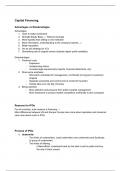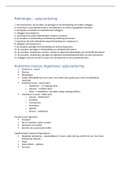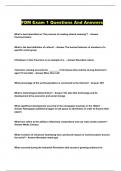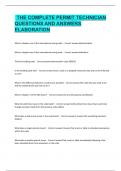Lecture notes
Advanced Corporate Finance: IPOs
- Institution
- The University Of Manchester (UOM)
This lecture notes is about Initial Public Offerings. The notes includes advantages and disadvantages of IPO, why would company choose to do IPO, and the process of IPOs. It also discuss the Anomalies in IPO, for example short-run underprice, Long-run Underperformance and Hot Issue Market Phenomeno...
[Show more]













